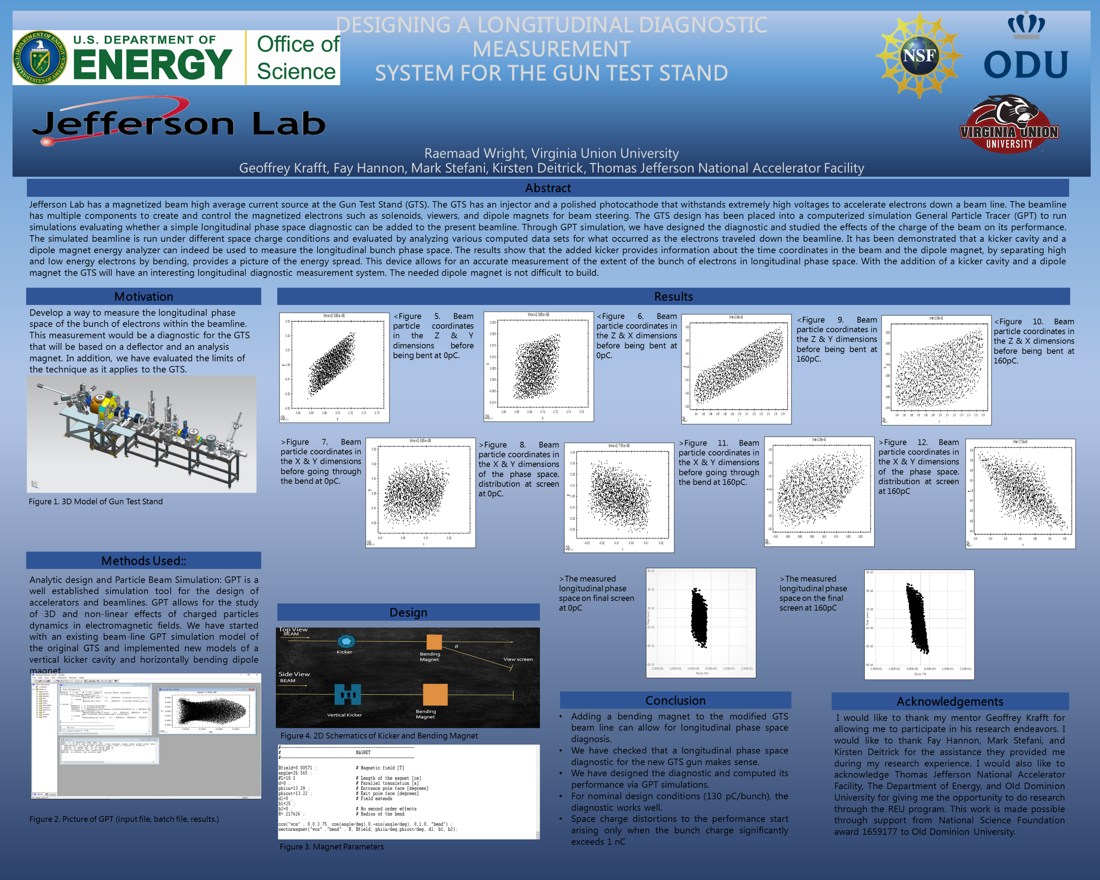Undergraduate Research at Jefferson Lab
Designing a Longitudinal Measurement System for the Gun Test Stand
Student: Raemaad Wright
School: Virginia Union University
Mentored By: Geoffrey Krafft
Jefferson Lab has a magnetized beam high average current source at the Gun Test Stand (GTS). The GTS has an injector and a polished photocathode that withstands extremely high voltages to accelerate electrons down a beam line. The beam line has multiple components to create and control the magnetized electrons such as solenoids, viewers, and dipole magnets for beam steering. The GTS design has been placed into a computerized simulation General Particle Tracer (GPT) to run simulations evaluating whether a simple longitudinal phase space diagnostic can be added to the present beam line. Through GPT simulation, we have designed the diagnostic and studied the effects of the charge of the beam on its performance. The simulated beam line is run under different space charge conditions and evaluated by analyzing various computed data sets for what occurred as the electrons traveled down the beam line. It has been demonstrated that a kicker cavity and a dipole magnet energy analyzer can indeed be used to measure the longitudinal bunch phase space. The results show that the added kicker provides information about the time coordinates in the beam and the dipole magnet, by separating high and low energy electrons by bending, provides a picture of the energy spread. This device allows for an accurate measurement of the extent of the bunch of electrons in longitudinal phase space. With the addition of a kicker cavity and a dipole magnet the GTS will have an interesting longitudinal diagnostic measurement system. The needed dipole magnet is not difficult to build.

Citation and linking information
For questions about this page, please contact Education Web Administrator.
